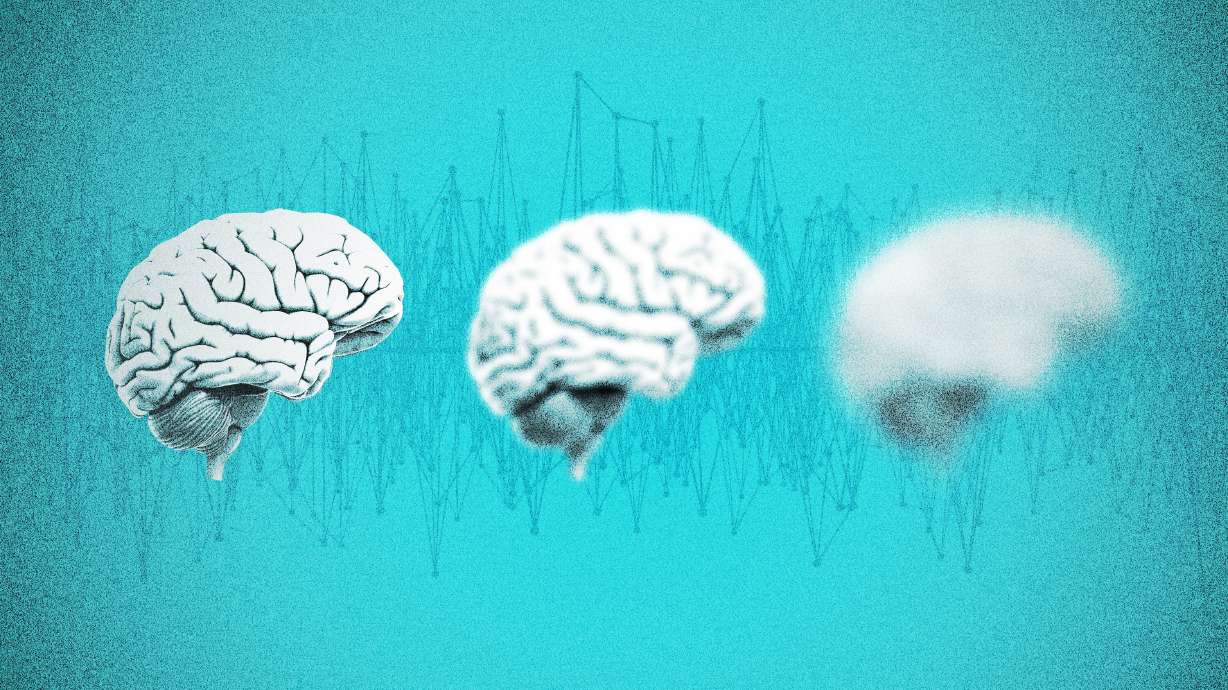Estimated read time: 5-6 minutes
This archived news story is available only for your personal, non-commercial use. Information in the story may be outdated or superseded by additional information. Reading or replaying the story in its archived form does not constitute a republication of the story.
SALT LAKE CITY — When the world shut down in the pandemic, adolescent brains started aging faster — especially the brains of adolescent girls. And the most logical explanation, according to researchers at the University of Washington, is social isolation.
Before the pandemic, those researchers were looking at 160 adolescents' brains. The pandemic changed their focus to the impact the pandemic lockdown had on young minds. They were able to compare the same brains both before and after the social distancing measures that, while designed to keep people safe from disease, may actually have harmed normal adolescent brain development.
The findings were published this week in the Proceedings of the National Academy of Sciences.
That the lockdown and isolation impacted young people negatively in terms of mental health has been well-documented. In a news release, the researchers call adolescence a time of transition, moving toward adulthood, "marked by dramatic changes in emotional, behavioral and social development. It's also a time when a sense of self-identity, self confidence and self-control are developed. The pandemic reduced social interactions for teenagers and led to documented reports of anxiety, depression and stress, especially for girls."
According to the study, the mean aging acceleration for female brains was 4.2 years, while it was 1.4 years for male brains.
"We think of the COVID-19 pandemic as a health crisis," Patricia Kuhl, senior author and co-director of the university's Institute for Learning & Brain Sciences, said in the release. "But we know that it produced other profound changes in our lives, especially for teenagers."
Measuring the brain as it ages
Brain maturation is measured using cerebral cortex thickness. That's the outer layer of tissue in the brain and it naturally thins with age, even for teens. The process speeds up with chronic stress and adversity, the researchers noted, and that thinning is linked to increased risk of developing neuropsychiatric and behavioral disorders. Those disorders may emerge during adolescence and females are at greater risk.
"Thinning of the cortex is not necessarily bad; some scientists frame the process as the brain rewiring itself as it matures, increasing its efficiency. But the process is known to accelerate in stressful conditions, and accelerated thinning is correlated with depression and anxiety," as The New York Times explained.
Others agree that the thinning process is not necessarily cause for concern. Dr. Ronald E. Dahl, director of the Institute of Human Development at the University of California Berkeley, who wasn't involved in the study, told the Times that thinning can be a "sign of maturational change. Accelerated thinning is being interpreted as a problem and it could be, but that is a leap."
The researchers used the pre-COVID-19 data on the 160 teenagers to create a baseline and map the expected cortical thinning that occurs in the teen years. Then they looked at the brains of the adolescents in the midst of the pandemic and its social distancing measures, 80% of whom continued in the study. They found accelerated thinning across adolescence, most pronounced in females. But there were differences.
Boys vs. girls
For the females, the cortical thinning occurred all over the brain, including all the lobes and both hemispheres. It was most obvious in parts of the brain involved with recognizing faces and facial expression, processing emotions and understanding language. In males, the cortical thinning was only in the visual cortex.
Kuhl said that might be because social interactions are more important to girls than to boys, and those were heavily curtailed in the pandemic. She noted that teenage girls often rely on relationships with other girls, while boys gather for physical activity.
"Teenagers really are walking a tightrope, trying to get their lives together," Kuhl said in the release. "They're under tremendous pressure. Then a global pandemic strikes and their normal channels of stress release are gone. Those release outlets aren't there anymore, but the social criticisms and pressures remain because of social media. What the pandemic really seems to have done is to isolate girls. All teenagers got isolated, but girls suffered more. It affected their brains much more dramatically."
The thickness of the cortex will still change, though it's not likely to recover its thickness, per the researchers. Instead, the thinning might slow over time with normal interactions. Finding out will require more study.
The researchers noted that in older people, cognitive brain function, processing speed and the ability to complete typical tasks correspond to how the cerebral cortex thins.
What does it mean?
"The pandemic provided a test case for the fragility of teenagers' brains," said Kuhl. "Our research introduces a new set of questions about what it means to speed up the aging process in the brain. All the best research raises profound new questions, and I think that's what we've done here."
Richard Bethlehem, an assistant professor of neuroinformatics at the University of Cambridge, told Newsweek that the sample size was small and it's hard to apply findings to a general population, "so we need to be cautious not to generalize these findings to all adolescents," he said in a statement. He added that it's also hard to say for certain that the lockdown was to blame, something that would require more research confirmation. A lot was going on during the pandemic.
"For example, many other things may have happened during the pandemic period such as infection with COVID or a number of infections. There are many factors that are not modeled or documented in this paper which could potentially explain these findings beyond the lockdowns themselves," Bethlehem said.









